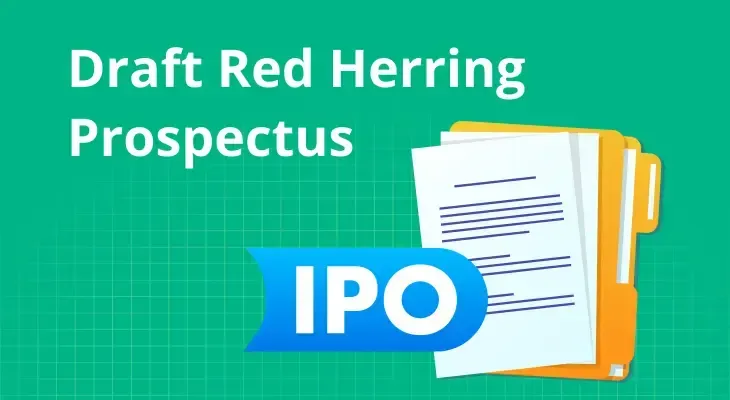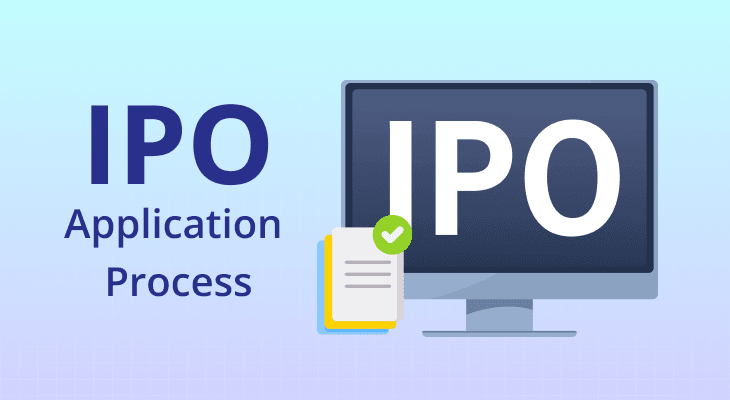
What is DRHP and its Importance
In the world of initial public offerings (IPOs) and stock market investments, the Draft Red Herring Prospectus (DRHP) is a crucial document that plays a significant role in providing essential information to potential investors. Understanding what an IPO DRHP is, and its importance, is essential for anyone looking to participate in IPOs. Let us understand the concept of DRHP and explore its significance in the stock market in the context of IPOs.
What is DRHP in the Stock Market?
The DRHP is a preliminary offering document released by a company intending to go public through the means of an IPO. It is filed with the Securities and Exchange Board of India (SEBI), which is the market regulator in India. The term "red herring" refers to the disclaimer that the document is not yet complete and is subject to further amendments and corrections by the company.
In essence, the DRHP provides comprehensive information about the company, its operations, financials, business model, risk factors, and the IPO offering itself. This information allows potential investors to evaluate the company's prospects and make knowledgeable investment decisions.
What Does the DRHP Entail?
The Draft Red Herring Prospectus (DRHP) is a comprehensive document that offers a detailed insight into various aspects of a company planning to go public through an IPO. It includes the following key contents:
Company Background
The DRHP usually begins with an overview of the company's history, details of incorporation, and its key milestones. It also provides essential information about the promoters, their background, and their expertise.
Business Description
The company's core business activities, products and/or services, target markets, and an understanding of the company's primary operations are provided in this section.
Risk Factors
The DRHP further goes on to identify potential risks that may affect the company's business and prospects. These risk factors can range from industry-specific challenges to regulatory, economic, or competitive risks.
Financial Performance
This section presents the company's financial data, including balance sheets, income statements, and cash flow statements. This information, such as the company's revenue, profitability, and cash flow trends, is vital for investors looking to invest in the company.
Use Of Proceeds
The DRHP specifies how the company intends to use the funds raised through the IPO by outlining the allocation of funds for various purposes, like debt repayment, expansion, or research and development.
Management And Promoters
Details about the company's management team, their qualifications, experience, and compensation are provided. It helps investors assess the capability and credibility of the leadership.
Industry Overview
This section offers a broader understanding of the industry in which the company operates. It includes market trends, growth prospects, and competitive landscape.
Legal And Regulatory Disclosures
The DRHP includes legal and regulatory disclosures, ensuring that potential investors are aware of any legal issues or pending litigations that may impact the company's operations.
Issue Details
This section covers details related to the IPO offering, such as the number of shares offered, price band, minimum and maximum bid quantities, and the timeline of the IPO process.
Lead Managers And Registrar
The DRHP mentions the investment banks acting as lead managers for the IPO. It also includes the details of the registrar responsible for share allotment and other related services.
Why Should You Understand the DRHP?
Since the company is not yet listed on the stock exchange, you may find it hard to find research material and other information online. In such a case, the DRHP serves as a vital document offering various advantages and aiding you in decision making activities. The importance and benefits of the DRHP are listed below:
Informed Investment Decisions
The DRHP empowers you with valuable insights into the company's background, financial performance, growth prospects, and risks associated with the IPO. Armed with this information, you can make well-informed decisions about participating in the offering.
Regulatory Compliance
Companies are required to file a DRHP with the market regulator to ensure transparency and compliance with regulatory norms. This step fosters investor protection and maintains the integrity of the IPO process.
Risk Assessment
The DRHP highlights the risk factors associated with the company and the IPO. You can carefully assess these risks and determine whether the potential returns justify the level of risk involved.
Fair Valuation
By disclosing relevant financial information, the DRHP assists in establishing a fair valuation for the company's shares. This information helps you gauge whether the IPO price is reasonable in relation to the company's fundamentals.
Transparency And Accountability
The DRHP serves as a means for the company to demonstrate transparency and accountability to potential investors. It lays bare the company's financials, operations, and intentions, building trust and credibility.
Investor Protection
Through the DRHP, you gain access to all pertinent details about the company, which helps safeguard your interests. By providing comprehensive information, the company reduces the likelihood of misleading or incomplete disclosures.
Difference Between the DRHP and the Final Prospectus
While both the DRHP and the Final Prospectus are IPO offering documents, there are significant differences between the two:
Purpose And Timing
The Draft Red Herring Prospectus is filed with the market regulator before the IPO is officially launched. It provides preliminary details about the company and the IPO offering, including the price band. On the other hand, the Final Prospectus is issued once the IPO pricing is finalized, providing final details and the offer price.
Completeness
The DRHP may lack the final offer price, which is determined later. In contrast, the Final Prospectus contains all the final details and becomes the basis for the IPO subscription.
Investor Applications
Investors cannot apply for shares based on the DRHP alone. It only serves as an initial document for investors to evaluate the IPO. Investors can apply for shares only after the Final Prospectus is available.
Updates And Amendments
If there are any changes or updates after the filing of the DRHP, an addendum or an amendment, known as an "Abridged Prospectus" or "Red Herring Prospectus with a price band," is issued. The Final Prospectus includes all these updates.
Investor Decision-Making
The IPO DRHP allows potential investors to assess the company's fundamentals, growth prospects, and risk factors. Based on this preliminary information, investors can indicate their interest in subscribing to the IPO. However, the Final Prospectus provides the final details, helping investors make their final investment decisions.
Both the Red Herring Prospectus and the Final Prospectus are essential components of the IPO process, providing you with crucial information to make informed decisions and participate in the IPO offering. You should review both documents carefully to understand the company's prospects fully.
Wrapping It Up
In conclusion, the Draft Red Herring Prospectus (DRHP) plays a vital role in the IPO process, offering potential investors a comprehensive overview of the company and its IPO offering. It serves as a tool for transparency, accountability, and investor protection, enabling investors to make well-informed decisions. By evaluating the DRHP, you can assess the company's growth prospects, risks, and financial performance, ultimately determining whether participation in the IPO aligns with your investment objectives.
FAQ
What is a Draft Red Herring Prospectus (DRHP)?
The Draft Red Herring Prospectus (DRHP) is a preliminary offering document filed by a company planning to go public through an IPO. It provides comprehensive information about the company, its financials, business model, and risk factors, allowing potential investors to evaluate the company's prospects.
Why is the DRHP important for IPO investors?
The DRHP is crucial for IPO investors as it empowers them to make informed decisions. It offers insights into the company's background, financial performance, and growth prospects, enabling investors to assess the risks and potential returns associated with the IPO.
How does the DRHP promote transparency?
The DRHP promotes transparency by requiring companies to disclose all relevant information about their operations, financials, and intentions. This transparency builds trust and confidence among potential investors.
Can investors rely solely on the DRHP for their investment decisions?
While the DRHP provides essential information, investors are encouraged to conduct further research and analysis beyond the document. Considering the DRHP alongside other financial data and expert opinions can enhance the decision-making process.
What role does the market regulator play in reviewing the DRHP?
The market regulator, such as SEBI or the SEC, reviews the DRHP to ensure compliance with regulatory norms. They verify the accuracy of information, verify disclosures, and evaluate if the IPO meets regulatory requirements.
How does the DRHP benefit companies going public?
The DRHP benefits companies by facilitating investor awareness and interest in the IPO. It allows companies to showcase their business model, financial performance, and growth potential to attract potential investors and raise capital.


